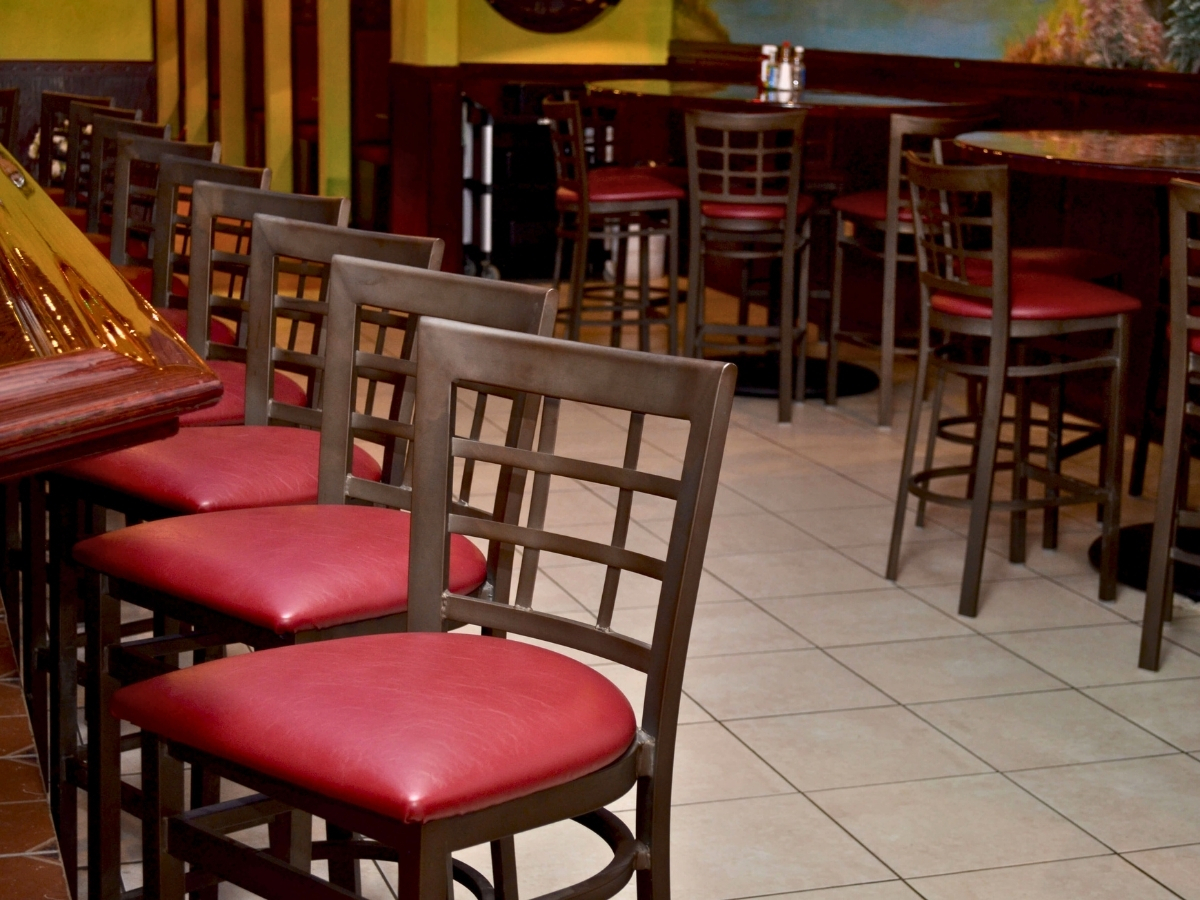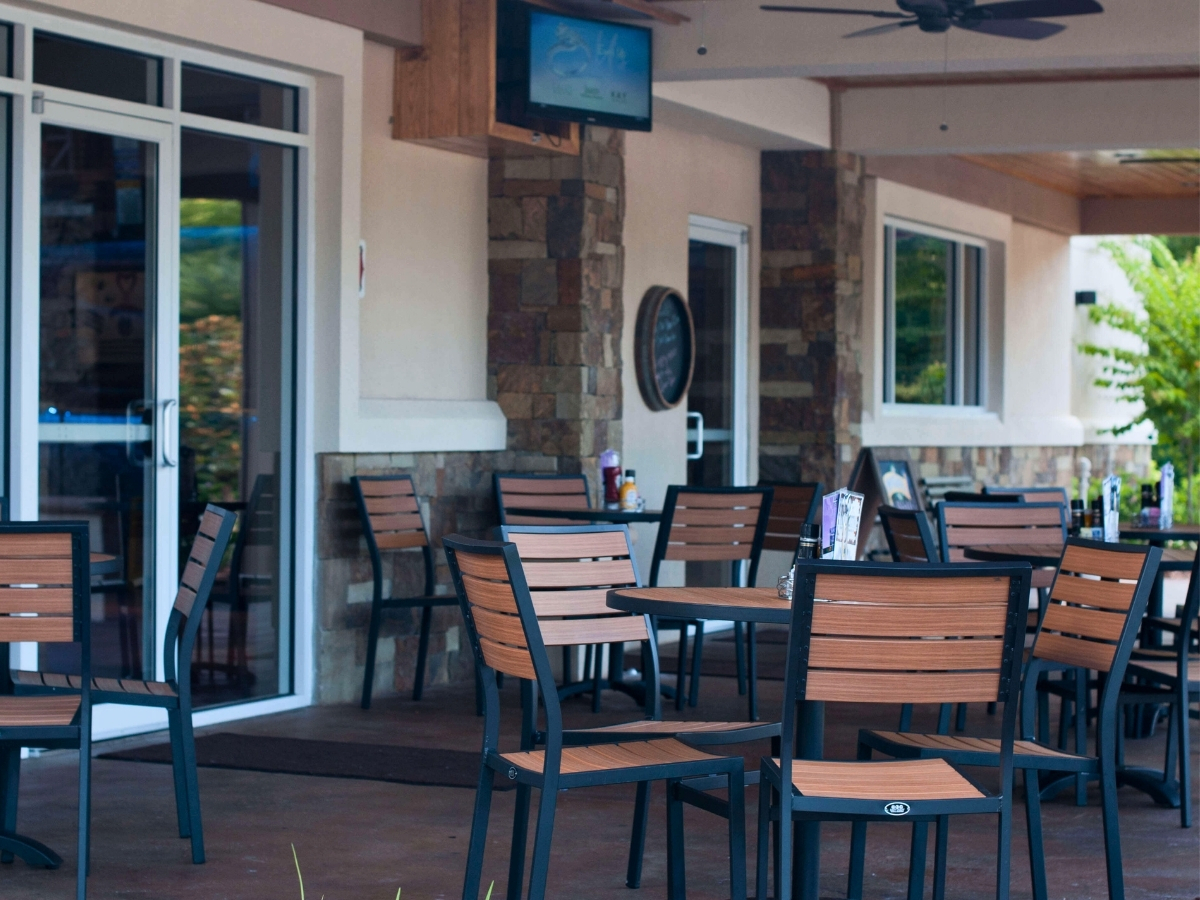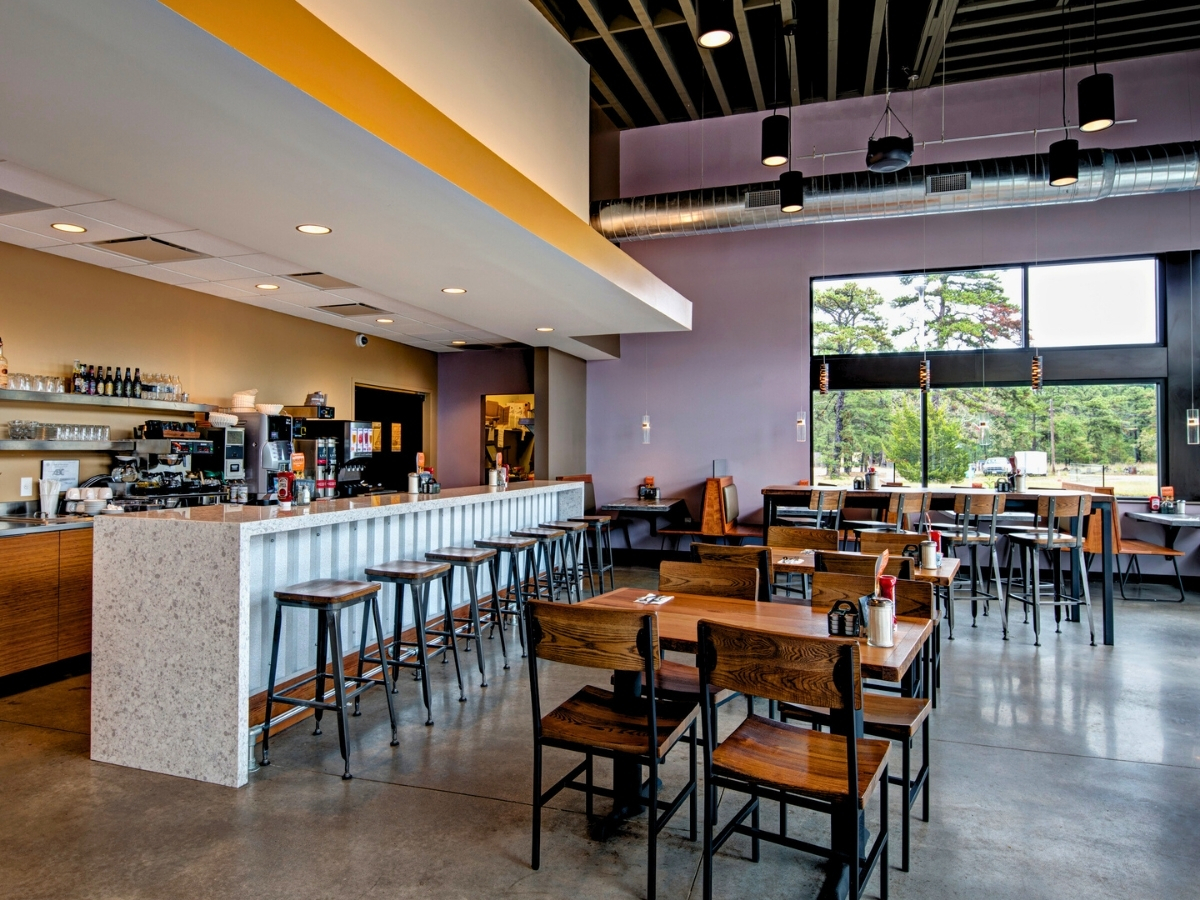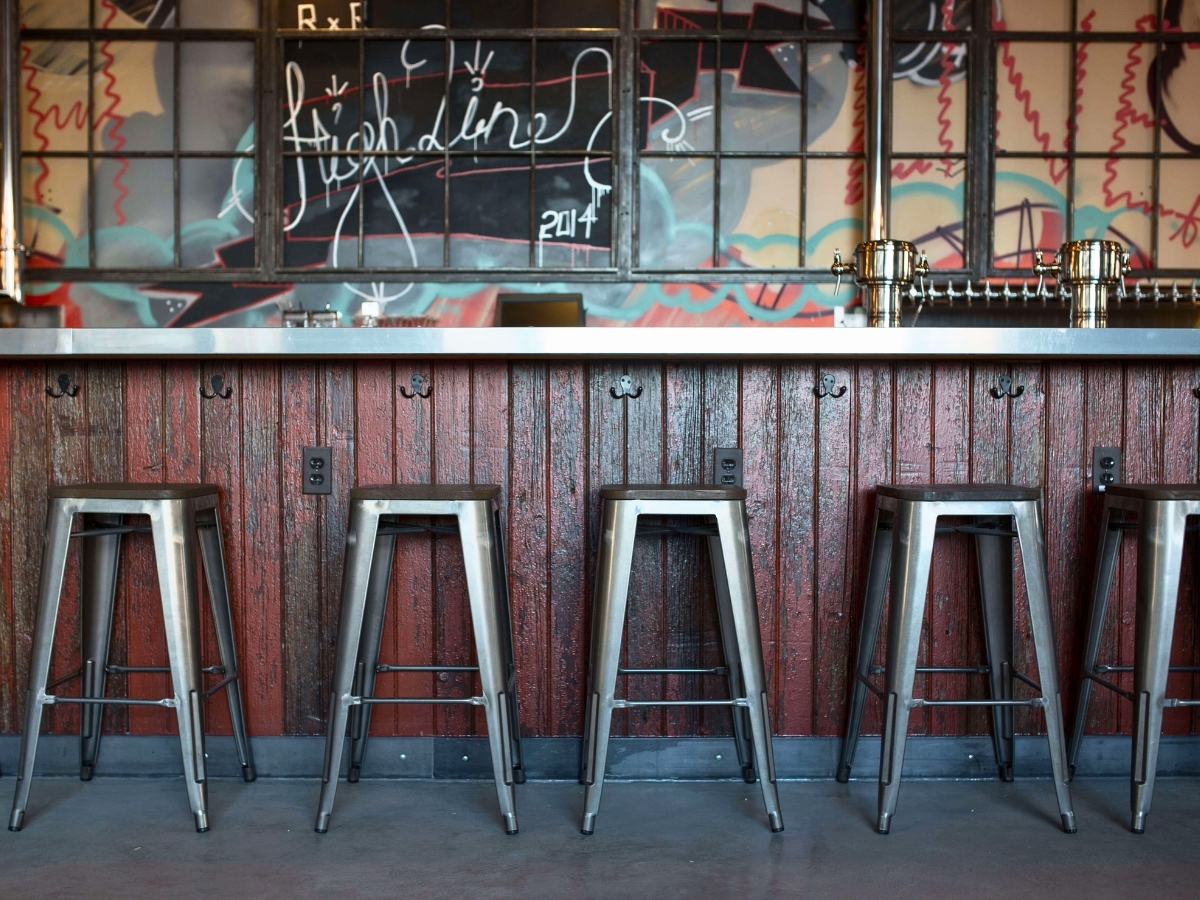Restaurant table tops can be finished with any finish available on the market, the question becomes more which should they be finished with. We’ve broken down the ins and outs of the three most popular finishes for solid wood tables to help you figure out what is the best finish to select for your restaurant tables.
Varnish is commonly used in the residential and commercial furniture sectors. Varnish is an oil-based wood finish that has been in use for centuries, while it has been around for some time, it can be a process to use. Before application can begin, all bubbles need to be stirred out of the varnish to avoid being transferred to the table top. When applying, end users should take care not to overbrush. Too many brushstrokes can be visible on the finished product. The varnish also has a slower drying time (ideally 10-15 hours between coats) than that of lacquer, running the risk of dust settling and corrupting the finishing process. Therefore, it has become a common practice to thin the varnish before use. After dry time, varnish is an extremely durable finish for highly used furniture pieces such as bar counters and restaurant table tops. But this lengthy wait time is a drawback for mass production, leading varnish to mostly be used by DIY-er’s and custom residential projects.
Lacquer is a popular commercial finish that comes in a variety of transparent sheens on many restaurant table tops. Lacquer uses resin-based liquid solutions that quickly dry into a hard film when exposed to oxygen by way of a catalytic agent. In the restaurant industry, most lacquer formulations include a catalytic agent. When the lacquer is dried, the catalytic agent allows the finish to form a more protective and durable coating. To apply, lacquer is typically sprayed on with its quick dry time of 5 to 10 minutes making it time efficient for manufacturers. A lacquer finish can easily be repaired with a trip to the hardware store by the end user since the table top normally does not need stripped down. On our table tops, we typically finish them using a three-part application of catalyzed lacquer sealer and top coat.
Polyurethane finish is one of the most durable restaurant table top finishes because of its similar characteristics to plastic. Polyurethane finish takes on many of the positives of varnish and less of its drawbacks. This finish can be oil or acrylic based, depending on the blend, making it chemical resistant and waterproof. This finish is applied with a brush and involves waiting four to six hours between coats. After applied, the polyurethane is harder and more durable than lacquer. You can often find polyurethane finish as an upgraded option because of the detailed processes it takes to apply. While there are different formulations of polyurethane, on our products, we use a commercial-grade formula as a premium on option on all our solid wood table tops.
Which finish should you use on your table tops?
The answer is not so cut and dry. It all depends on what your intended use is for your table tops.
- If you’ve been collecting antique tables to give your restaurant a certain look, it’s likely they will have a varnish finish because this method has been around for many years. Unfortunately, there’s a good chance that these tables are not commercial-grade, which could present structural issues with the table itself in the future.
- If you’re a restaurant owner in need of basic solid wood tables for a swiftly approaching open date, then a lacquer finish will do just fine. Lacquer-finished tops are easy to repair should something happen to them.
- If you’re putting quite a bit of money down on specialty tables and want to increase their resistance to water, chemicals, and body oils, a polyurethane finish would be your best option. This modern finish is formulated to resist standing liquids caused by spills and cleaning.
There are pros and cons of all finishes, but in the end what will determine the ideal finish for your table tops is how you plan on using them.






